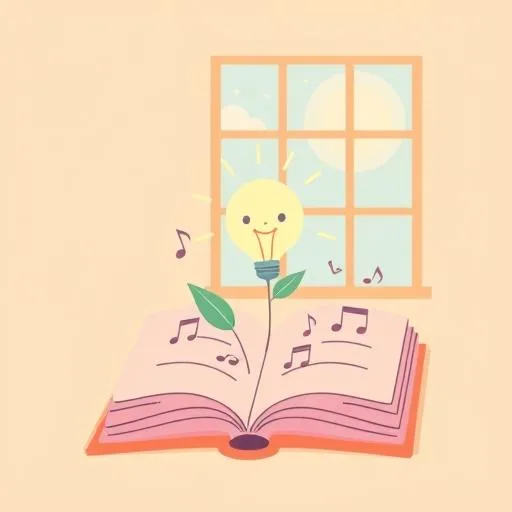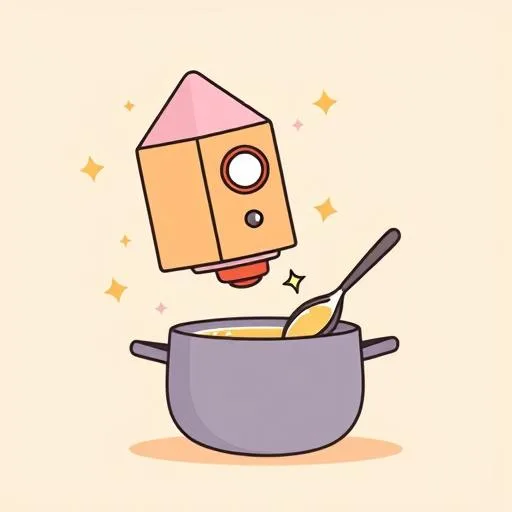
Have you ever stopped to think about your refrigerator? Probably not. It just sits there, humming away, keeping the milk from spoiling. But what if I told you that humble kitchen appliance holds the most electrifying, hope-filled secret for raising our kids in this new world of incredible technology? Venture capitalist Chamath Palihapitiya recently made waves by comparing AI to refrigeration, and folks, it’s a perspective that completely flips the script on parenting. He argued that the real winners won’t be the ones who build the best fridge, but the ones who use it to create something amazing. And for us parents? This is EVERYTHING. It means the pressure is off. The future isn’t a race to build the machine; it’s a wide-open invitation to create, to dream, and to be wonderfully, brilliantly human.
The Real Magic Isn’t the Box, It’s the Recipe

Let’s just get this out there: it’s SOOOO easy to get caught up in the frenzy. We hear about new tools and immediately think, “Oh no, does my seven-year-old need to learn how to build one of these? Are we falling behind?” Palihapitiya’s idea is like a huge, calming breath of fresh air. He says that, like refrigeration, the underlying technology will become a commodity. Lots of people can build a cold box. The real, lasting value—the true genius—comes from the application. It’s the chef who combines ingredients in a new way, the parent who whips up a midnight snack for a sad kid, the friends who gather around a meal made with love. The refrigerator is just the enabler; the human creativity is the main event. YES!
Think about it. When my daughter grabs a pile of colorful blocks, the goal isn’t just to see how high she can stack them. The magic explodes when she creates this adorably imperfect rocket ship for her stuffed bunny and starts narrating its grand adventure to the moon. She’s not focused on the engineering of the blocks; she’s using them to tell a story. That’s the mindset we need to champion! It’s not about raising kids who can assemble the tech, but kids who can look at a tool and ask, “What incredible story can we tell with this? What amazing problem can we solve?” This shifts our entire focus from pressure and performance to possibility and play. And honestly, what an absolutely game-changing relief!
Moving Beyond ‘Winners and Losers’ to Creators and Connectors

A lot of the conversation around these new technologies gets framed as a high-stakes game of winners and losers. Palihapitiya even predicts which giants might stumble as new tools change the way we find information. It’s fascinating stuff, but as parents, that’s not our scoreboard. Our kids’ success isn’t measured by market share or tech profits. Our win is seeing them grow into resilient, compassionate, and adaptable human beings.
Now, it’s true that some research highlights a real concern: these powerful innovations could widen the gap between the haves and have-nots. Studies from institutions like the IMF and CEPR suggest that AI’s economic benefits might flow more to the top, potentially leaving others behind. And that’s a serious conversation for society. But at home, within our families, we have this incredible power to build a different kind of wealth. We can equip our kids with a richness of character and a portfolio of uniquely human skills that no machine can replicate. We’re talking about empathy, collaboration, and the courage to try something new and fail spectacularly. That’s the currency that will never lose its value.
Nurturing Your Little Innovator’s Toolkit

So, what does this actually look like on a Tuesday afternoon when the homework is done and the kids are bouncing off the walls? It’s simpler and more joyful than you think. It’s about turning our homes into labs of curiosity, not just classrooms for tech. It’s about using AI in education not as a tutor, but as a creative sidekick.
Instead of just asking a smart device for the capital of Mongolia, what if we used it as a launchpad? “That’s a cool fact! Now, let’s use this image tool to imagine what a playground would look like there! What games would the kids play?” Suddenly, a simple question becomes a world-building exercise. We’re not just consuming information; we’re co-creating with the tool. We’re sparking imagination and critical thinking. We’re teaching our kids that technology is a paintbrush, a musical instrument, a storyteller’s assistant—a powerful partner for their own incredible ideas.
This is how we build that innovator’s toolkit. We fill it with wonder, with “what if” questions, and with the joyful messiness of making something new. We show them that the most powerful processor is still the one between their ears, powered by a heart full of curiosity.
Cooking Up a Future That’s Uniquely Theirs

Much like how during our family meals, we blend traditional flavors with modern twists—say, making kimchi tacos for dinner—parenting with AI is about finding that same delicious balance. It’s not about choosing one over the other; it’s about making them work together in a way that feels right for our family rhythm.
When you get right down to it, Chamath Palihapitiya’s analogy is profoundly hopeful. The future isn’t some scary, predetermined landscape where our kids have to fight for a spot. It’s a kitchen, stocked with the most incredible new appliances we’ve ever seen. And our job isn’t to teach them the mechanics of the refrigerator. Our job is to fill it with amazing ingredients—kindness, resilience, creativity, and a deep-seated belief in their own unique flavor.
Our role is to be the head chef of encouragement, cheering them on as they experiment, make a mess, and maybe burn a few things along the way. Because the world doesn’t just need more people who can build the technology. More than ever, it needs people who can apply it with wisdom, with heart, and with a vision for a better, more connected world. It needs the dreamers, the storytellers, the community-builders. It needs our kids, ready to cook up something wonderful.
Source: Who will make the most money from AI? Facebook executive turned venture capitalist Chamath Palihapitiya’s fascinating prediction resurfaces, Economic Times, 2025/09/06 12:51:52
